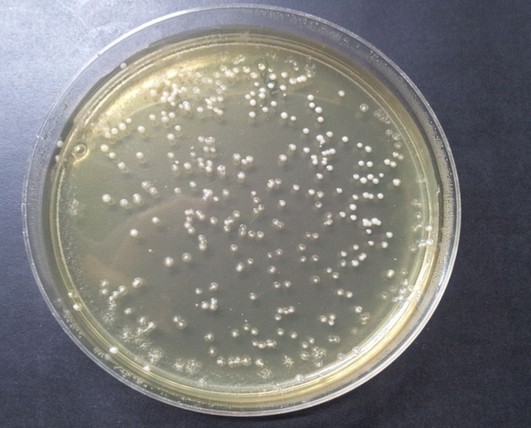Yeast evolution reveals cancer strategy
Interview with
What happens if you delete the gene encoding an essential transfer  RNA in yeast?
RNA in yeast?
Yitzhak - This particular study, aimed at understanding how the protein translation machinery evolves. In between a protein and a DNA, is a process called translation, carried out by a factor we call a ribosome that looks at RNA and it converts it, or as we call it, translate it into protein. Its a very sophisticated process that has evolved in living species for billions of years. And we wanted to understand how it evolved.
Chris - How can you probe what's taken billions of years of evolution in a test tube in the laboratory within the scope of a grant?
Yitzhak - So, the way we probed that is we mutate the system and then we ask the organism to relax back to a normal state in which it has to mutate so as to restore all balances and checks, and so on, within it. So we went in particular ,to one type of molecule that is at the heart of the translation process. This molecule is called tRNA, a transfer RNA, that helps the ribosome decode information that is stored in the RNA and converts it into a protein. And we decided to delete them from the genome of the yeast cell. If you remove a particular tRNA, you just eliminate the ability of the cell to incorporate one of the 20 amino acids into its proteins and then you ask it to solve the challenge. And we were amazed to see that although this a major assault on the cell, after just about a month or two of evolution, it overcomes the challenge.
Chris - How does it actually do that? Does it take one of the other tRNA molecules that would code for the incorporation of different amino acid, and subvert that into using a pathway that would have been subserved by the now missing one, or does it do something else?
Yitzhak - So, actually it turns out be exactly the solution. The cells convert another tRNA into effectively, being similar to the tRNA that we have deleted. So, if different tRNA serves as almost like synonymous words to one another, you take one synonymous word and you convert it by a mutation process to become identical to the one that was lost and by that, restores the balance.
Chris - Do you not end up robbing Peter to pay Paul, whereby you take one of these tRNAs to replace the missing one? Well, what happens to the job it used to do?
Yitzhak - It turns out that the pool from which it takes, contains many redundant copies, 11 copies. And the one that we have deleted appears in the single copy. So, it makes a lot of sense in fact, for the cell to sacrifice one of the 11 copies to solve the problem of a singleton gene of another type.
Chris - Seems to be a day for really bad analogies and metaphors, but chicken or egg? Why are there 11 copies of some of these tRNAs? Is that with this very process in mind?
Yitzhak - Yeah. That's a very interesting idea, that the cell is generating a reservoir of backups providing molecules, such that mutations can shift one into another. It's a very interesting concept, although I believe that it's the mere role of the 11 copies situation, was just to backup the cell in case of a mutation. In some other tRNA, it would not have been stably maintained in the genome as such. So, we quite pretty much believe that the 11 copies serve for a good purpose in the cell. But when you have zero copy of another, it's an emergency situation and one of the 11 copies needs to be sacrificed.
Chris - What do you the implications of what you found for biology and evolution are?
Yitzhak - The main value of lab evolution exercises, is that it allows us to ask what happens in nature. So, in fact we were able to get a clue from what we found in the lab, and then examined all the genomes of all the species that the genome project has explored so far. And we discovered that its mechanism was evolving the translation apparatus in which one tRNA mutates into another is very prevalent in nature. And natural history of species has utilised this mode of evolution to a very common solution to challenges that must have occurred on Earth. And in addition, we have a good reason to believe that something along these lines occurs also in cancer. Cancerous cells are cells that need to evolve a capacity to grow much faster than the normal cells in the body. We think today that cancerous cells may have accumulated mutations in their translation apparatus that would help them to convert between different synonymous tRNAs to serve the needs of cancerous cells.










Comments
Add a comment